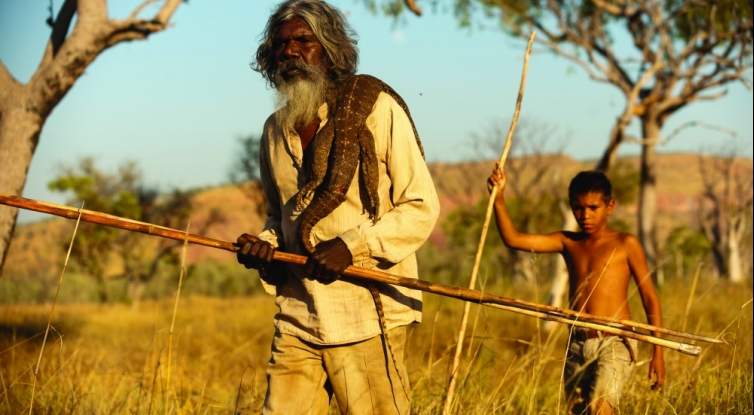Satellite Boy
Beautiful cinematography and performances lift a very Australian film to great heights.
Overview
Satellite Boy is a truly great Aussie film. It's not just a great film that happens to be shot in Australia; this touching and evocative little fable from first-time film director Catriona McKenzie is a great film that was both born and bred in Australia and whose primary protagonist is Australia herself.
And what a protagonist she is! If Tourism Australia had any sense, they would put Satellite Boy on every cinema screen in the world, as it may be the most dazzling advertisement for Australia's natural beauty that has ever been committed to celluloid. The celestial night sky, the pink sunsets and the dry lake beds of the Kimberley region are so gorgeously photographed by cinematographer Geoffrey Simpson that they come to take on an almost otherworldly quality, perfectly befitting the film's fascination with the spiritual wonder of the Australian outback. Much like Terrence Malick's legendary cinematographer, Emmanuel Lubezki, Simpson seems acutely aware that setting always equals character.
The film tells the story of two Aboriginal boys, Pete and Kalmain (newcomers Cameron Wallaby and Joseph Pedley). After hearing that a major mining company are planning to tear down Pete's home in order to make way for a massive industrial development, the two boys head cross country to give the company's executives a piece of their mind. Inevitably this path is one of enormous self-discovery, with both boys coming to understand what living in and of the land truly means. Basically, what McKenzie gives us is the Indigenous equivalent of a road trip/coming-of-age film, or perhaps more accurately, a walkabout film.
To the film's discredit, the story is at times as hackneyed and overwrought as its premise suggests. Many of the characters' revelations, particularly towards the film's conclusion, are stiflingly conventional and detract from the more subtle and gradual developments of the first two acts. Yet Roger Ebert often wrote that "it's not what a movie is about, it's how it is about it", and in this case Satellite Boy manages to transcend its inherent simplicities due to the visual and lyrical flair with which the filmmakers imbue each and every shot.
The story itself never pretends to be anything more than a grand allegory for what is essentially the central Aboriginal struggle of the last 200 years: displacement from spiritual home. The beauty of the Australian landscape is contrasted with the rotted and ruined nature of technology. Disused tractors have become heaps of rusted iron, telephones fail to connect Pete with his estranged mother and a single handgun threatens to tear the boys' friendship apart.
Ultimately, this story belongs to the two newcomers, Wallaby and Pedley. Their genuine chemistry and naturalistic performances gives the characters an infectious warmth and youthful exuberance that is as compelling as it is endearing. Satellite Boy may well have passed as another Australian "also-ran" if it weren't for these phenomenally mature performances.





